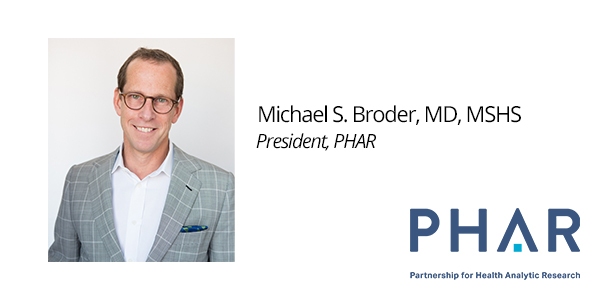How to Change Clinical Practice Using Health Economics and Outcomes Research
July 16, 2022
In 2005 and 2009, I published HEOR studies that led to an 80% drop in the number of US women who had their ovaries removed at the time of hysterectomy. Over the 17 years since our first paper came out, the practice has almost disappeared. A recent study reported that from 2005 to 2015 the incidence of so-called “prophylactic oophorectomy” decreased from more than 300/100,000 person-years to 58/100,000 person-years. An accompanying editorial credited our papers as being key to this change, although certainly there were other studies supporting what we found.
In the 30 years since I graduated medical school, I’ve published two books, nearly 200 papers, and countless abstracts. Only one other study even approached the impact of the two on oophorectomy: in 2000, while still working at the RAND think tank, I published a study showing that more than half of hysterectomies were inappropriate. This paper generated lots of interest (and some anger) in the Ob-Gyn community. In the 10 years that followed, hysterectomy rates declined about 20% in the US.
In this post, I’ll share six things I learned about why these studies had such a dramatic impact when most similar research gets published and forgotten.
For background, starting in the late 1990s removing a woman’s ovaries at the time of hysterectomy became a popular way to reduce the risk of later developing ovarian cancer. Despite there being nothing beyond a theory to support the practice, by 2001, 50% of hysterectomies done for reasons other than cancer were accompanied by oophorectomy.
In the early 2000s, a colleague and I started talking about how wrong this practice seemed. Both of us had trouble believing that normal, functioning organs should be removed based on a theory, no matter how plausible. But, although the practice of prophylactic oophorectomy didn’t have much evidence to support it, we didn’t have much evidence to refute it either. So we came up with a plan to change that.
Removing ovaries decreases the risk ovarian cancer (a terrible disease to die of, and very hard to find early), but it increases the risk of coronary vascular disease, or CVD. Ovarian estrogen production is thought to explain this (and why women have lower CVD risk than men throughout most of their lives), although that may not be the whole story. Rough approximations suggested to us that most doctors were balancing the data incorrectly. While cancer is responsible for 20% of deaths in US women, ovarian cancer causes only 2%. CVD is responsible for 10 times that number.
These differences are so large, it may be surprising they weren’t obvious to everyone. But medical culture is inherently interventionist: doctors feel better doing surgery to prevent ovarian cancer than they feel doing nothing. Gynecologists also see and treat ovarian cancer as part of their routine scope of practice, but they don’t treat CVD. And medicine in the US has a history of misogyny, undervaluing women’s reproductive organs, particularly in women not interested in having children.
But doctors do try to follow the data, and my colleague and I believed that laying out this math with a decision model could help gynecologists better weigh the risks and benefits. We assembled a diverse group of collaborators, each with a key area of expertise (including oncology, endocrinology, epidemiology, and modeling). In 2005, we published a model clearly showing that (excluding the <1% of women with genetic mutations like BRCA1/2) prophylactic oophorectomy would not lengthen life for exactly the reason we suspected: CVD kills way more women than ovarian cancer.
The paper generated a lot of discussion, but also a surprising amount of pushback. The main case against our work was that it was a theoretical model, not real data. We couldn’t argue with that point, so in 2008 we added two team members and set out to analyze data from Harvard’s Nurses Health Study. The Nurses Health Study has followed more than 100,000 women for decades with detailed biannual surveys and is the basis for much of what we now know about the prevention of chronic diseases. We compared mortality between women who had their ovaries prophylactically removed at the time of hysterectomy and those who did not. We found that prophylactic oophorectomy did not increase survival in any analysis or any age group. None. The reason? CVD deaths went up more than ovarian cancer deaths went down.
Thinking about these rare examples where HEOR was able to change practice, I’ve distilled what I think are the main reasons:
- We were addressing significant gaps between current practice and best practice.
Most HEOR studies I’ve published (or read) examine a marginal improvement provided by one intervention over another. These practice-changing papers showed that the way most clinicians conceived of an intervention wasn’t in line with the facts. Case in point: with oophorectomy, gynecologists were missing the fact that a disease they didn’t see much (CVD) was more important to survival than one they did (ovarian cancer).
- Changing opinion in an information vacuum is easier than doing so in the presence of conflicting evidence.
Before our papers came out, clinicians were relying on conceptual logic (“removing ovaries is easy and can prevent ovarian cancer”), rather than data. The estimates for our model mostly came from case-control studies with a handful from RCTs on related issues (e.g., our estimates of CVD-related mortality came in part from an RCT of post-menopausal hormone therapy). In this poorly studied space, a single model and a single retrospective analysis stood out. There have been more than a hundred RCTs testing the link between statins and CVD mortality. Had we been trying to change practice around statin use, we would have had a much larger evidentiary hill to climb.
- We were trying to improve health, not improve efficiency or reduce costs.
Individual health care providers almost always prioritize doing what’s best for the patient in front of them at that moment. Considering systemic issues like cost or equity are much harder for a busy clinician. As a result, studies that aim to improve clinical outcomes are always of more interest to clinicians than those that focus on reducing cost.
- We didn’t stop our work with the publication of two studies.
Both individually and as a group, our team wrote a series of review articles for journals with overlapping but slightly different audiences. Each focused on a slightly different aspect of our results, tailored to the specific forum. This helped keep the topic in gynecologists’ minds and reached people who would not have seen the two original academic papers. We also updated the Nurses Health Study work a few years after the initial publication, repeating analyses that had been underpowered in our first study. With the hysterectomy appropriateness work, we only published our single study. To be sure, others conducted similar studies with similar findings, but I didn’t make the same kind of concerted effort to keep getting the word out over time. Looking back, I think we might have had an even bigger impact on the overuse of hysterectomy if we had stayed focused on sharing what we found.
- We were in the right place at the right time.
In the years between when we started our second oophorectomy study and when it was published, researchers on multiple continents were doing analogous studies with similar data. Almost without exception, their findings were similar to ours: at no age was there a mortality benefit of prophylactic oophorectomy in women at average risk for ovarian cancer.At the time we published the hysterectomy study, increasing attention was being paid to patient participation in medical decision-making. Newer, less invasive alternatives to hysterectomy were also becoming popular. Had there been no alternatives, rates might have still decreased, but likely not as much.Changing gender dynamics in the field probably helped, too. When I finished my residency 25 years ago, about 20% of practicing physicians were female. Last year, half of all resident physicians in the US were women, as were more than 80% of all Ob-Gyn residents. I think men are more likely to believe that a uterus and ovaries are “reproductive” organs, and without function in a woman who doesn’t want children. (But don’t try asking if they think the same thing about the analogous male organs.)
- We had a phenomenal team.
The colleague who originally conceived of the model, Bill Parker, is a gifted clinician and experienced researcher, and he was laser-focused on identifying a great team for each of the studies. He made sure we not only had people with the key technical skills, but who were also extremely knowledgeable and whose views would be respected. Here, that meant people with expertise in epidemiology, statistics, gynecologic cancers, and endocrinology. Each team member made invaluable contributions to study design, implementation, interpretation, and dissemination. We also had a set of guiding beliefs that made us a better team and improved our final output. For example, we believed that a recommendation to remove healthy organs needed to be supported by a strong body of evidence. My co-authors often heard me say, “Normal organs should be considered innocent until proven guilty.” We thought a dispassionate analysis would support our views, but we were willing to follow the evidence wherever it went.
Training, experience, and data are major factors driving clinical decision-making. But once practices are ingrained, changing data isn’t enough. Bias, misplaced incentives, inertia, and a host of other factors make changing clinical practice difficult. As a result, having all the above elements—focusing on an area that lacks evidence, aiming to improve health, publishing widely, assembling a great team, and having good luck—won’t guarantee your work changes practice, but it will make it easier to overcome the barriers that stand in the way.
Contact Michael at mbroder@pharllc.com or visit pharllc.com

In 2004, Dr. Broder founded PHAR, a clinically-focused health economics and outcomes research consultancy. PHAR is a team of dedicated, highly trained researchers —individuals who are singularly focused on delivering high-quality health economics and outcomes research insights to the life science industry. PHAR has successfully conducted hundreds of studies resulting in more than 800 publications on a wide variety of therapeutic areas, and maintains an expansive network of collaborators, including 8 of the top 10 academic institutions in the US, as measured by NIH funding. Download our bibliography here.
Unencumbered by corporate bureaucracy, PHAR can efficiently execute contracts and complete projects on time and on budget. PHAR prides itself on being reliable and responsive to clients’ changing needs, and welcoming the challenge of tackling problems others can’t.







